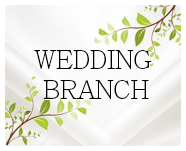What are you planning to wear under your wedding dress? A pretty matching two-piece, sexy Basque lingerie or maybe shapewear to hold you in? Consider your wedding dress style, body shape and remember to factor in comfort. Here are some pointers to help you make the best choice when it comes to choosing underwear to wear on your wedding day and how to avoid doing what I did when I accidentally flashed mine at all my guests in church…
When you’re wearing a bridal gown, whether a heavy duchess satin meringue with layers of underskirts or a slinkier number, it’s important to find the right underwear. So where do you start?
Here’s what to consider;
How to support and make the most of your bust whatever size you are
Where to find the right bra if your gown is strapless or backless
Whether to wear tights, stockings and suspenders or hold-ups
What style of knickers for comfort and/or style
How to flatten your tummy and shape your hips to create smoother lines under your gown
How to narrow your waist to create more of an hour-glass figure
Whether to wear a garter or not
Bra and knickers
A bra and knickers (or just the knickers) is likely to be the most comfortable option. It’s worth trying on several different types of bras with your wedding dress before you decide on one, considering how it feels as much as how well it supports and how pretty it looks.
The good news is there is an underwear solution for every gown, whatever the cut. You can find strapless, backless, multi-way, low-front and low-back bras, bras to support, maximise or minimise or push-up breasts to create cleavage. You don’t have to wear white either; with the right dress you could wear a pastel shade or even a darker shade of underwear, only to be revealed on your wedding night.
Strapless and backless bras
Strapless dresses are still very much in vogue and many are gorgeous and flattering but they do differ greatly in their construction. Some are made with inner support for your bust while others will need a good strapless bra to be worn underneath.
Backless or low-backed gowns can be worn without a bra for the few of us who are brave enough but a clever multi-way bra is, for most of us, a much better option.
Knickers or G-string
The knickers you choose have to be comfy. Don’t be tempted to try something different on your wedding day such as the delicate derriere dental floss fashion’ of the G-string, just to impress the man you have already impressed
If you’re used to G-strings then fine but if not, trust us, this is not the day to try one out for the first time.
Basques and corsets
A sexy alternative to the separates is a one-piece Basque or corset. Some will support your bust and pull in your waist and tummy but not all so it is worth trying these on with your gown, ideally before buying. Most come with suspenders attached, just add knickers and stockings. You could look stunning in the right corset or Basque.
Shapewear
If you want a flatter tummy, slimmer hips and/or a lifted bottom then consider shapewear. It can make a real difference and doesn’t have to look like a Bridget Jones wet suit. Shapewear is not all beige, some is now silky, lacy and sexy as well as shaping.
Garters, stockings, tights and hold-ups
You don’t have to wear anything on your legs but nylons can make your shoes more comfortable. There are pros and cons as tights can be hot (and arguably unsexy at the end of the night) while sexier stockings can be fiddly with suspenders and hold-ups can feel tight and don’t always hold up all day.
If you don’t mind suspenders then stockings are a good option and one your groom will enjoy helping you take off at the end of the night. Wear a garter if you want to – when will you ever get to wear one again?














